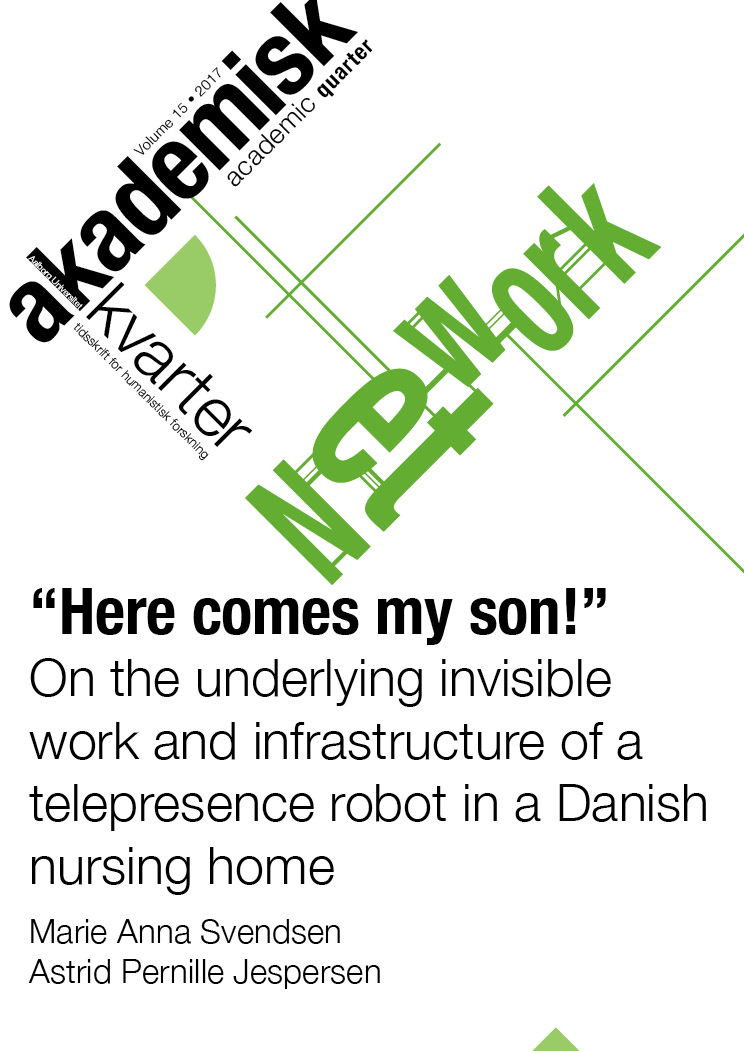Abstract | Abstract
The article uncovers the formation of an infrastructure made to facilitate the implementation of a telepresence robot in a Danish nursing home. Ethnographic fieldwork data illuminates how myriad of human and non-human actors, such as supporters, Wi-Fi networks, care workers and cameras, work together as a hybrid, socio-technical collective. This collective constantly coordinates and improvises in a joint effort to construct, maintain and stabilise the flexible infrastructure, which facilitates the implementation of the new communication technology in the daily routines of staff and residents at the nursing home. The main argument of the article is that implementation of new technology is dependent on large amounts of work on the part of both of human and technical actors. Much of this work is normally invisible to and lack acknowledgment by decision makers. Thus, the article argues that a focus on infrastructure proves crucial in the uncovering of otherwise invisible work processes.
